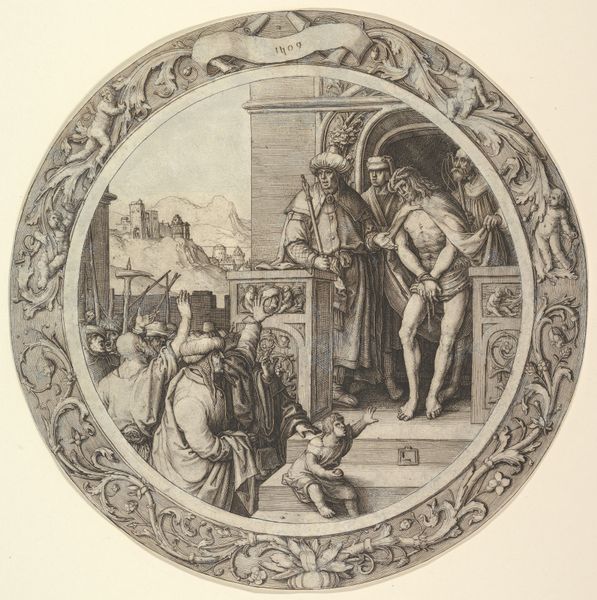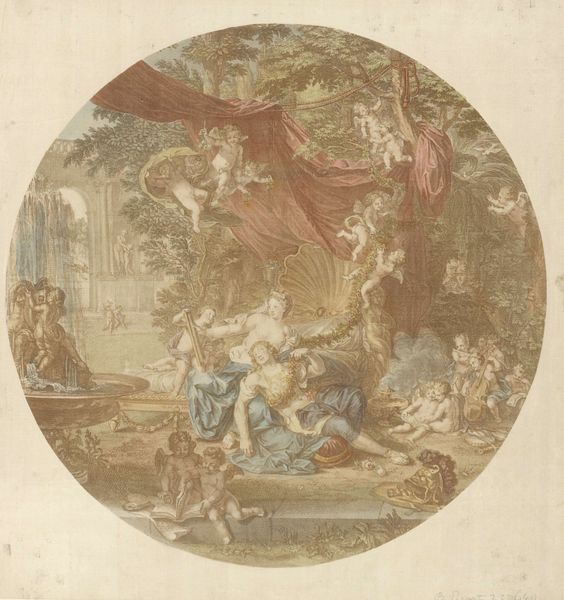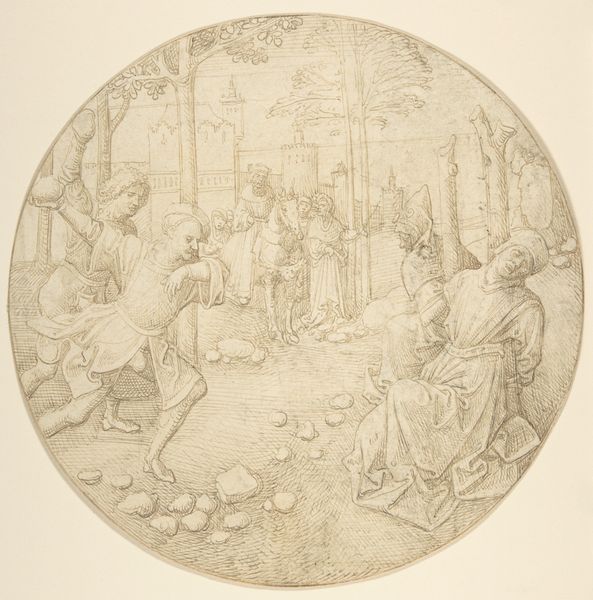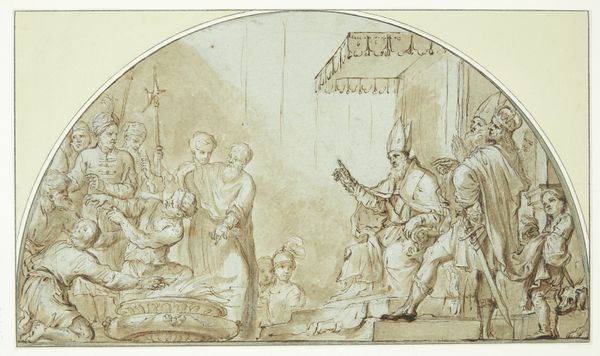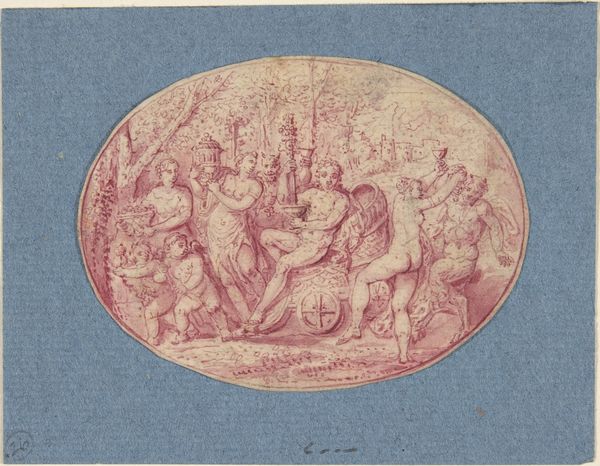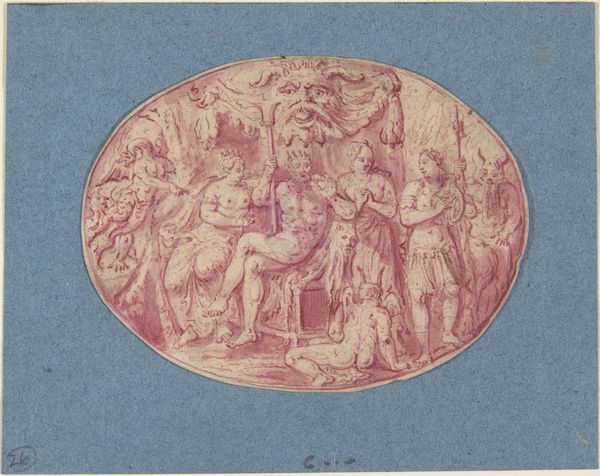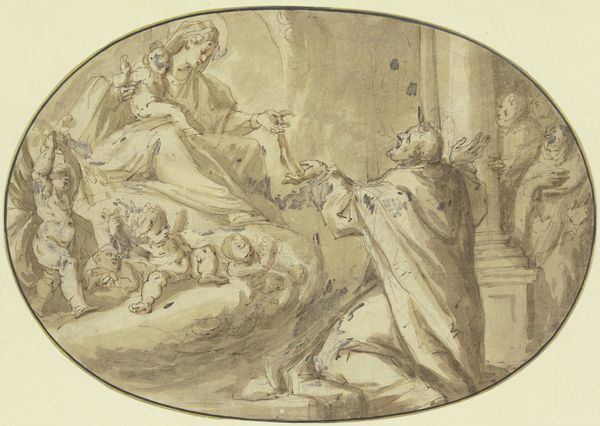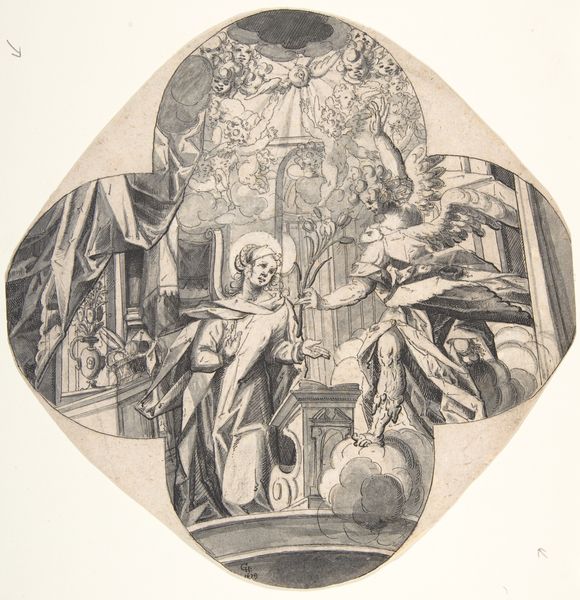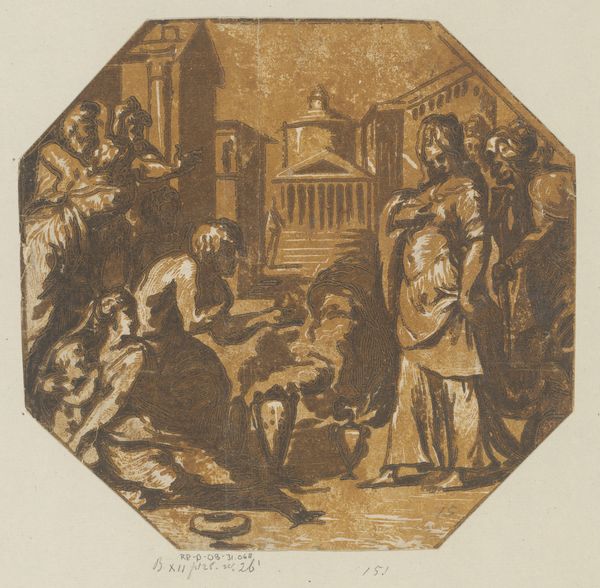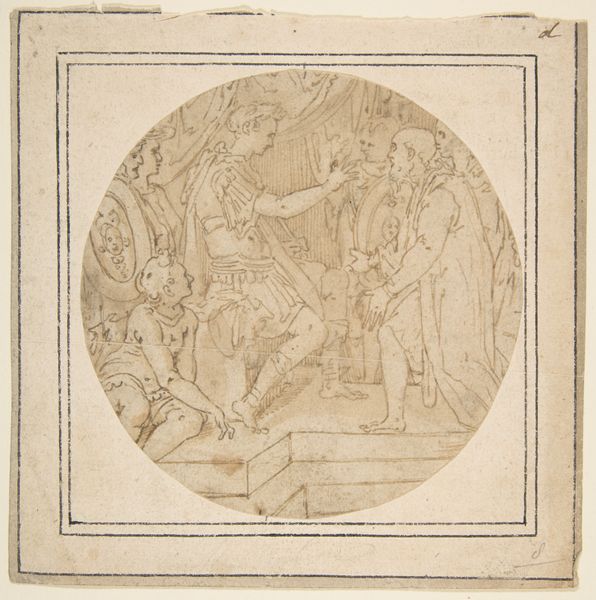
Dimensions: Diameter 11 1/4 in. (28.6 cm)
Copyright: Public Domain
Curator: Jörg Breu the Younger created this circular watercolor, ink, and graphite drawing titled "The Garden of Love" sometime between 1510 and 1600. Editor: Wow, it's a chaotic little world! The colors are so soft and dreamy, almost like looking through a faded memory. So many bodies and gestures, all swirling together! Curator: Indeed. It offers a fascinating snapshot into the social and cultural values around love and marriage during the Renaissance period. Think about how gender roles and expectations shaped interactions within these spaces. We can view this as an illustration of elite courtship, almost a symbolic transaction that reinforces certain power structures. Editor: Power structures, yes, but it feels playful, too. The nudity, the embraces... There’s a hint of satire here, don’t you think? Like a cheeky commentary on the whole performance. Like, "Look at us, playing these elaborate games of love!" It looks so precarious. Like it could fall apart at any second. Curator: It's interesting that you see the instability; these compositions also offer idyllic and moralistic views, very common at the time. Marriage then was more closely aligned with familial status and economic prospects, so images such as this could serve as encouragement for young couples or a warning about inappropriate displays of affection. I think understanding the art as both celebration and caution gives greater insight. Editor: I like that idea of both celebration and warning existing together, because as someone with no particular investment in either of those positions, I feel free to be just intrigued and let this garden live in its delightful moment of ambiguity. What about the framing? Curator: Yes, the roundel format is so striking, too! The way the artist contains this scene within a perfect circle. It feels almost voyeuristic, doesn't it? Like we're peering into this secret world, a self-contained universe of love and desire. It prompts discussions on boundaries, both literal and figurative. How do they inform the reading of this amorous subject? Editor: Absolutely. It also feels kind of comforting, you know? To see human relationships and anxieties portrayed so vividly, even centuries later. I love the slightly mischievous touch in the corner where it's almost as if some dog is also in on it all. It kind of makes me smile at the audacity of trying to contain life's messiness within a circle! Curator: And by recognizing its social underpinnings, maybe we also gain a broader understanding of how these romantic landscapes evolve across time and the ongoing complexities of love in a world that simultaneously celebrates and complicates relationships. Editor: I agree; well, this little love garden has sparked some interesting weeds of thought, hasn't it? Time for me to move along, hoping to unearth some more hidden corners elsewhere in the museum.
Comments
No comments
Be the first to comment and join the conversation on the ultimate creative platform.
